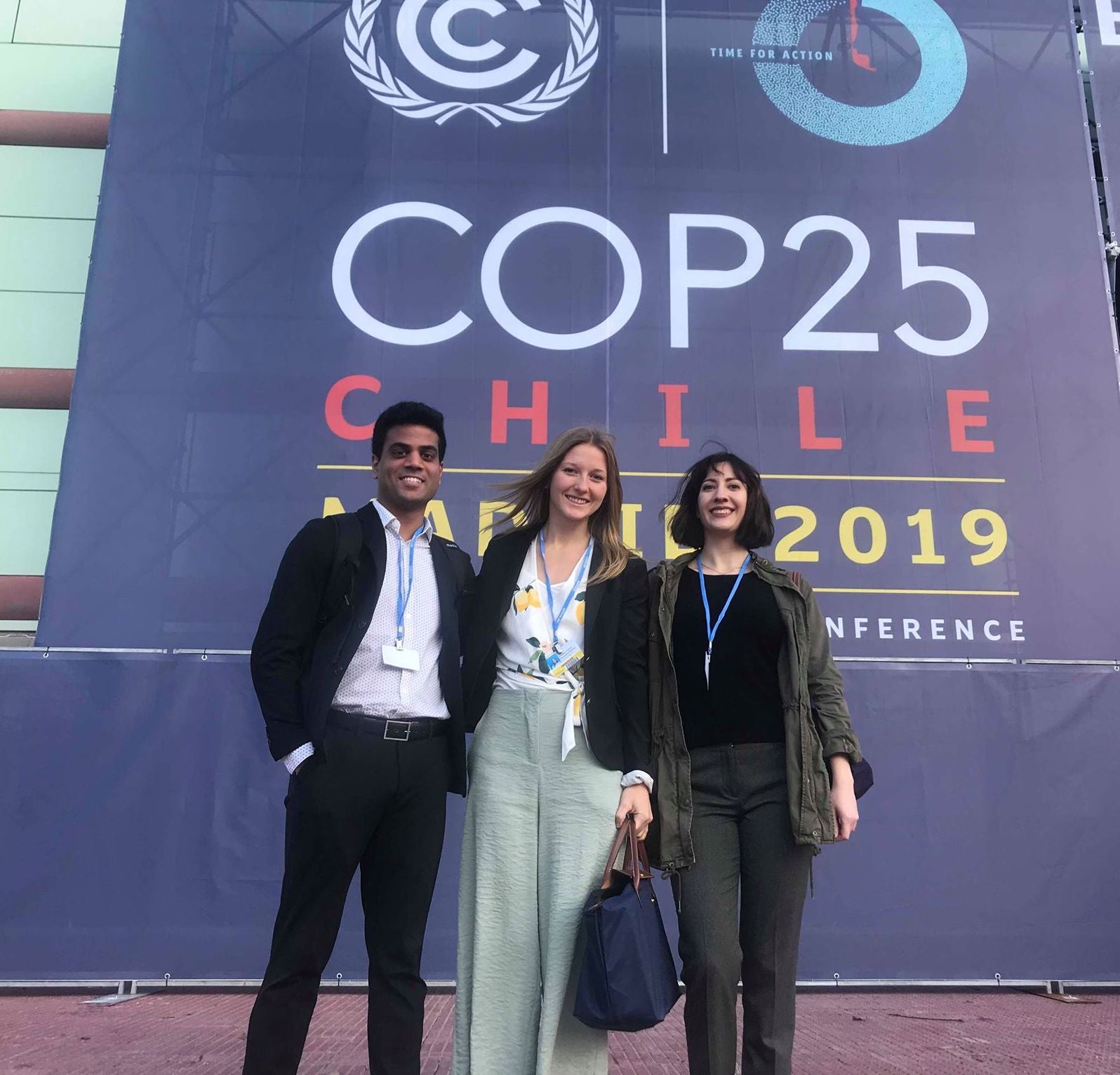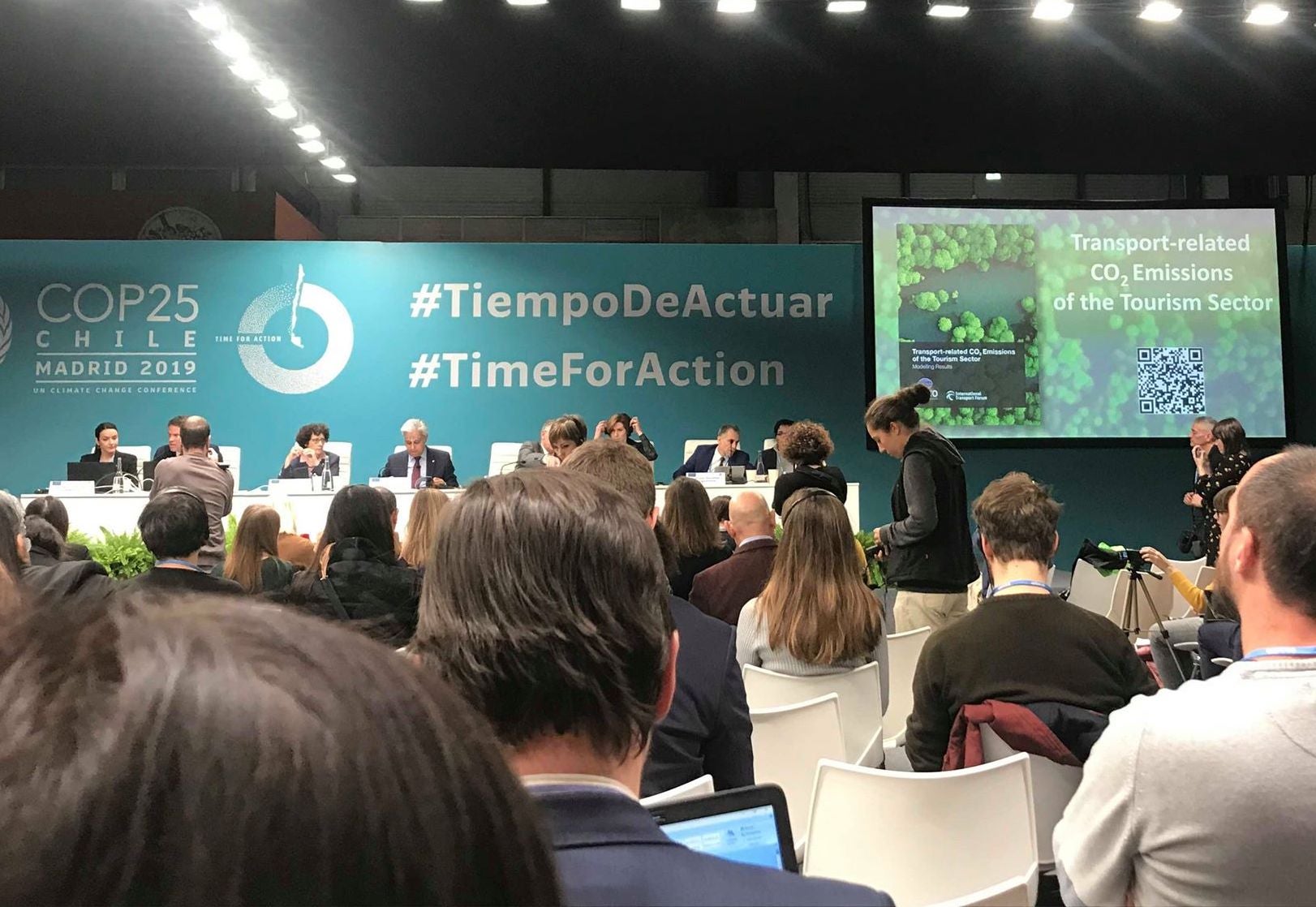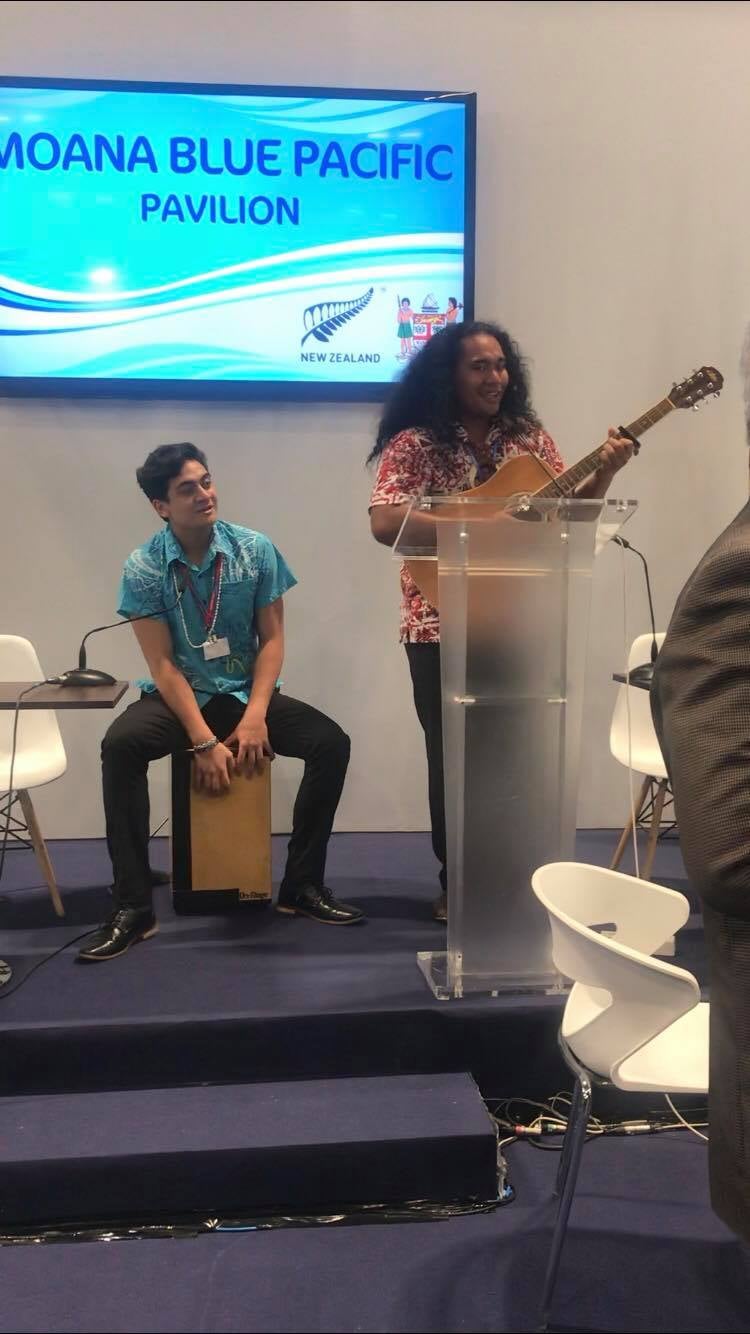Two days of COP25 have come and gone and I am starting to notice a general theme in the topics that I have been following over the past two days. One of the main focuses of COP25 is to enhance ambition for action. While this has been noted in many of the events, one thing that I took away from this ideology of ambition was the power of people and importance of collaboration in society for positive, forward shifts.

I found that, so far, events that highlighted actual people and communities behind climate change impacts and/or solutions became most memorable for me. I think putting a face behind climate change really has potential to create increase momentum on ambitious actions. Throughout the past two days, we heard a lot about the impact of climate change on vulnerable communities and how this trickles down into the actual people that live in these communities. Stories were shared from Indigenous communities in northern regions to Small Island Developing Nations in more tropical regions. As an example, there is a lot of vocalization from delegates from the Bahamas on the impacts of Hurricane Dorian. One delegate at the Earth Information Day on December 3rd stated that, “we are not the major culprit of climate change, but we take on the major impact”. We also heard from representatives of Indigenous communities in the Amazon Rainforest. During these conversations, there was a lot of discussion about the current crisis regarding forest fires and land use in the Amazon Rainforest and how indigenous people currently have no legal base or title on their territory. This lack of legal basis leaves them with little rights and increases their vulnerability to climate change currently and in the future. I found that this really highlighted the importance of recognizing land rights of Indigenous communities going forward to ensure an equitable fight against climate change.

While it is important to understand the impacts of climate change on humanity, COP25 has also highlighted the importance of incorporating people into the solution going forward. One event that discussed this regarded bridging the gap of fossil fuel production to reach targets outlined in the Paris Agreement. Conversations discussed that this bridging involves an accelerated movement away from fossil fuel reliance in communities across the world. However, it was emphasized that for this to be a successful and equitable process, people who are affected, such as workers in the fossil fuel industry, need to be at the frontline of this transition. We heard about this from a Canadian perspective, as well as from an international perspective. For the Canadian perspective, Joie Warnolk from UNIFOR discussed the importance of empowering Albertan coal workers by putting them at the heart of the transition in order to achieve a successful phase out of coal in Alberta by 2030.
We also heard from Alysha Bagasra, who is working on the transition away from fossil fuels in Taranaki, New Zealand. She mentioned that a lot of this transition involves allowing people to “see an opportunity for them and their families in the transition process”. Since the start of this transition, Alysha mentioned that people working in the fossil fuel sector have actively partnered with people to create a shared vision for the future.
Overall, what I have really appreciated about COP25 so far is that the events really do highlight the importance of climate action for humanity through hearing real stories from vulnerable communities, while also highlighting the power of people to make change going forward. Also, the ability to learn from other countries to understand their vulnerabilities, while also highlighting and celebrating their climate change solutions, has been extremely empowering for me.
As the days went by at COP25, I started to become more and more aware about actions that are occurring on the ground level across the world. Since the theme of this COP is ‘Time for Action’, this realization was extremely refreshing as I sometimes find the lack of action on the national level frustrating. I find through media coverage, ambition on climate action can seem to be lacking. But what COP25 taught me is that there is more going on than can be seen by the naked eye.
Throughout the week, COP was full of events put on by NGOs, civil society organizations, and Indigenous communities across the world that are extremely active on climate action. One group that was very active during the first week of COP was the Global Ecovillage Network. Their work is extremely important as their mission is to catalyze communities for a regenerative world and act as a strong platform for international projects that accelerate the transition to more resilient societies. This organization has expanded all across the world, in both rural and urban areas, with one of their main projects involving the restoration of degraded lands with sustainable agricultural practices, such as permaculture, that helps sequester carbon and increase food security.
We also learned about the importance of civil society in the movement away from carbon-based energy sources. During an event called ‘Renewable Energy in Cities, hosted by REN21, Morocco was highlighted as a success story of how citizen activism can lead to increased ambition. Civil society in Morocco actually pushed the national government to understand the importance of environmental and renewable energy projects for a sustainable future. This push eventually resulted in the Government of Morocco adopting a 50% renewable energy target by 2025 and establishing a ‘Renewable Energy Unit’, that includes government officials and civil society working together to make this target achievable.

Another story of action was the banning of offshore oil in New Zealand due to citizen uprising. This was highlighted by a documentary presented at the Moana Blue Pacific pavilion. This 10-year fight against large oil companies showed the New Zealand Government what citizens wanted, which resulted in the current New Zealand administration prohibiting the granting of licenses for offshore oil drilling. The Moana Blue Pacific pavilion also presented a documentary called ‘Vaka’ that highlighted the island of Tokelau and their transition to all renewable electricity sources in 2012. This success story truly emphasised how small island nations, which are inherently those most impacted by climate change, are also the ones leading on climate action in many cases.
COP25 ended by bringing people together from all across the world with a performance by Maori artist Rako Pasefika in the “Moana Blue Pacific” pavilion. For me, this was a perfect way to end this amazing experience as I COP really opened my eyes to the power of communities across the world. Reminiscing on this amazing experience, I feel like my worldview has been enhanced by showing me the resilience that can be built solely due to strong social connections and the reconnection with the natural world.
This leads me to one of my key take-aways from COP 25. I think that we often believe technology will save us from this climate emergency. However, what COP has taught me is that while technology plays a large piece in this puzzle, the strength in our social connections and relationship with nature also hold a drastic part in the transition. All in all, COP25 was a truly inspiring and enriching experience and I am so thankful to IC3 and the University of Waterloo for giving me this opportunity!

Brooklyn is a Masters of Climate Change student. She attended COP25 United Nations Climate Change Conference in Madrid, Spain during fall 2019. This is her reflection from participating as a student delegate.